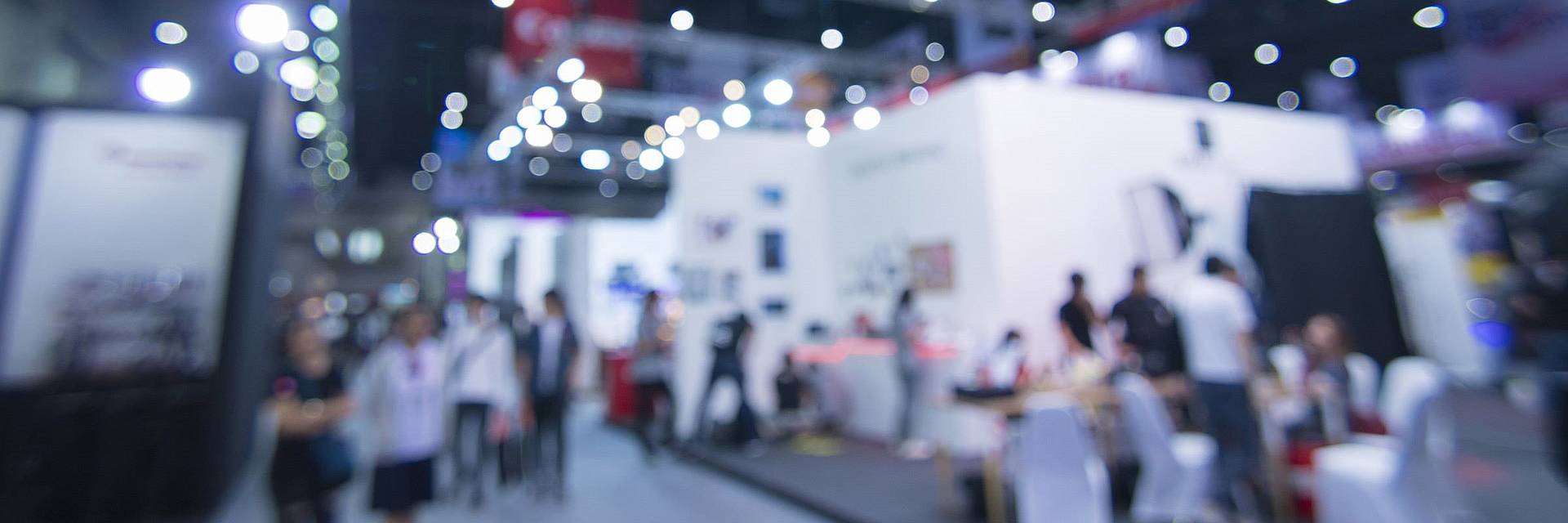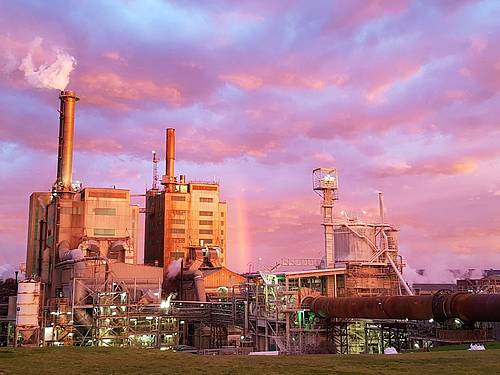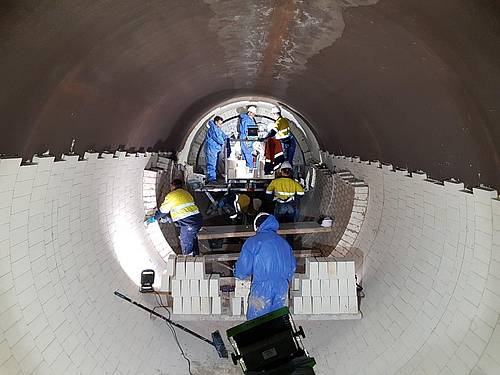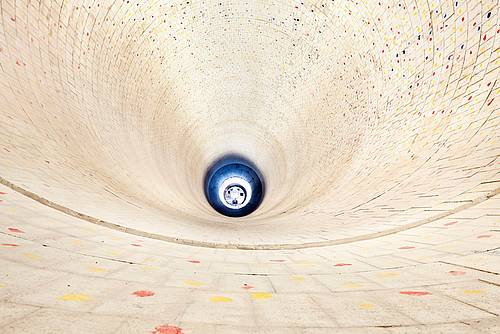In addition to its five paper machines, three pulp mills and two waste-paper recycling plants, the customer operates a rotary lime kiln with an overall length of 106 m and a diameter of 3.6 m at its mill in Maryvale, Victoria. This kiln plays a crucial role in the manufacture of pulp and paper, as it ensures that a continuous supply of burnt lime is on hand at all times. With an output of 290 tons per day, the kiln produces around 8,700 tons of lime each month.
Calcium carbonate (CaCO3), otherwise known and lime sludge, is fed into the rotary kiln where it reacts at temperatures of between 900 °C and 1,200 °C to generate carbon dioxide (CO2) and calcium oxide (CaO), so-called burnt lime. The now reactive lime is then added to the actual pulp and paper production process where it is used to regenerate caustic soda for the digestion process.
The intention was to replace around 52 m of the existing refractory lining in the rotary kiln during the scheduled annual shut-down in August/September of 2018. Apart from supplying the materials themselves (around 37,500 bricks or 260 tons of refractory material) it was especially important to the customer that they find a new partner to handle all refractory-related matters, i.e. engineering work, supply of materials and installation/supervision. Despite being over 16,000 km away, the collaboration between the two Steuler subsidiaries on this turnkey project ran smoothly, much to the satisfaction of the customer. Positive references combined with our extensive knowledge and experience in this field were deciding factors in our being awarded the order.
Engineering services, material supply and supervision were provided from the head office in Germany. The actual on-site installation was carried out by STEULER-KCH Australia under the supervision of Iain Bennet (Managing Director) with an international crew from Australia, New Zealand, South Africa and Germany. Thanks to 5,600 man-hours and a crew consisting of 37 bricklayers and 3 supervisors operating a 2-shift day, the ambitious installation time of 10 days was met, despite a delay in the kiln being made available.
In summary, the international project team completed the job on time and to the full satisfaction of the customer. And as a consequence, follow-up orders have already been received in the meantime.
Besides the proven two-layer lining concept for the burning zone, which is the section that suffers the greatest wear, a newly developed single-layer design was devised and supplied for the upstream pre-heating and transition zone. Our Application Technology Department developed and supplied a new type of brick, the Steuler ST 302 MW, especially for this purpose.
The ST 302 MW is a high-strength, partially-insulating material based on specially selected raw materials. Its stand-out feature is that it can be used as the working layer in a wide range of different applications thanks to its high strength and abrasion resistance. Because it has a lower thermal conductivity than dense firebricks, heat losses in the kiln are reduced. In the case of Australian Paper, the calculated heat losses in the transition zone using a conventional refractory clay amount to roughly 52,897 W/m, whereas with the newly developed Steuler ST 302 MW, they‘re just 37,050 W/m. This equates to an overall saving of 190,165 W for the zone as a whole.
Apart from the above-mentioned energy savings, the lower weight also results in a reduction in stress on the drive gears and races in the case of the rotary kiln specifically.
Because of the type of raw materials used, the refractory is resistant to attack by alkalis too, because a protective layer is formed during operation that significantly reduces the penetration of alkaline substances into the interior of the bricks.
This makes it ideally suited for use in the pre-heating and transition zones of many furnaces, including those used in the lime industry.




